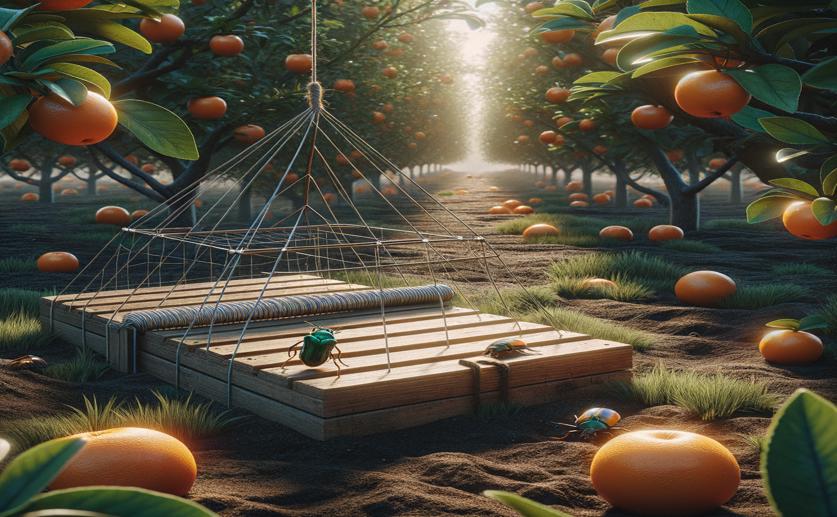
Best Trap Designs for Catching Beetles in Orchards
Jim Crocker
29th June, 2024

Image Source: Natural Science News, 2024
Key Findings
- The study was conducted in pecan orchards in Georgia and apple orchards in New York to refine trapping methods for ambrosia beetles
- Clear sticky cards were found to be the most effective trap design for capturing ambrosia beetles in both orchard locations
- Low-release ethanol lures paired with sticky cards were particularly effective in capturing major beetle species like X. crassiusculus, X. compactus, X. germanus, and A. maiche
AgricultureEnvironmentAnimal Science
References
Main Study
1) Comparison of ethanol-baited trap designs for ambrosia beetles in orchards in the eastern United States.
Published 28th June, 2024
https://doi.org/10.1093/jee/toae145
Related Studies
2) Trap Tree and Interception Trap Techniques for Management of Ambrosia Beetles (Coleoptera: Curculionidae: Scolytinae) in Nursery Production.
3) Xylosandrus germanus (Coleoptera: Curculionidae: Scolytinae) Occurrence, Fungal Associations, and Management Trials in New York Apple Orchards.
4) Efficacy of traps, lures, and repellents for Xylosandrus compactus (Coleoptera: Curculionidae) and other ambrosia beetles on Coffea arabica plantations and Acacia koa nurseries in Hawaii.



 30th May, 2024 | Jenn Hoskins
30th May, 2024 | Jenn Hoskins